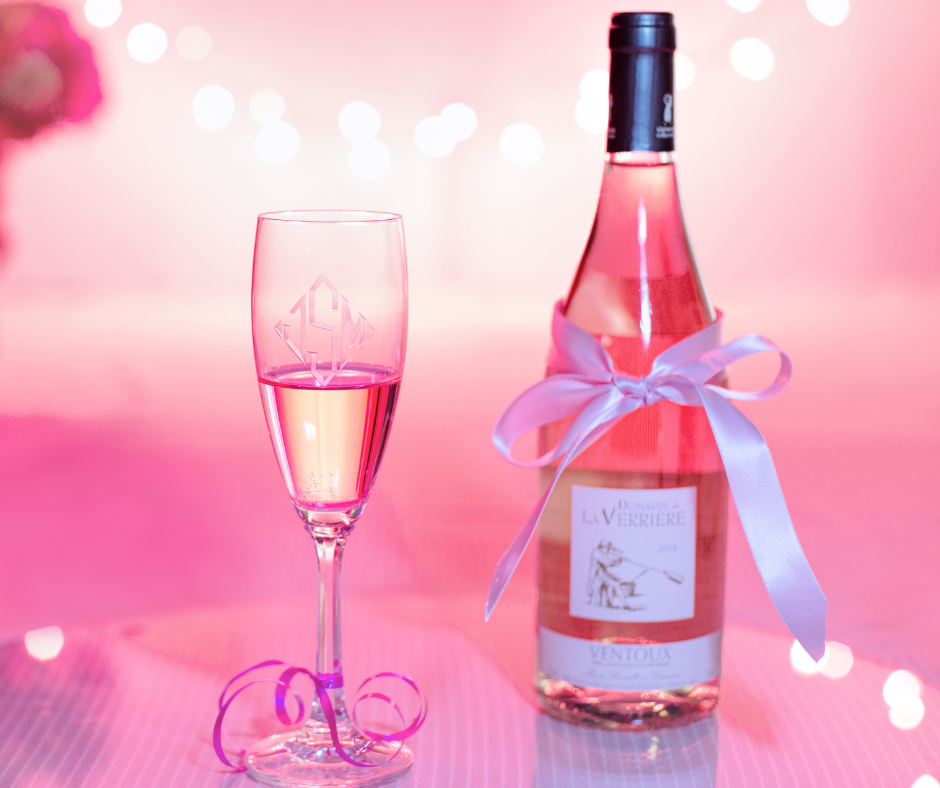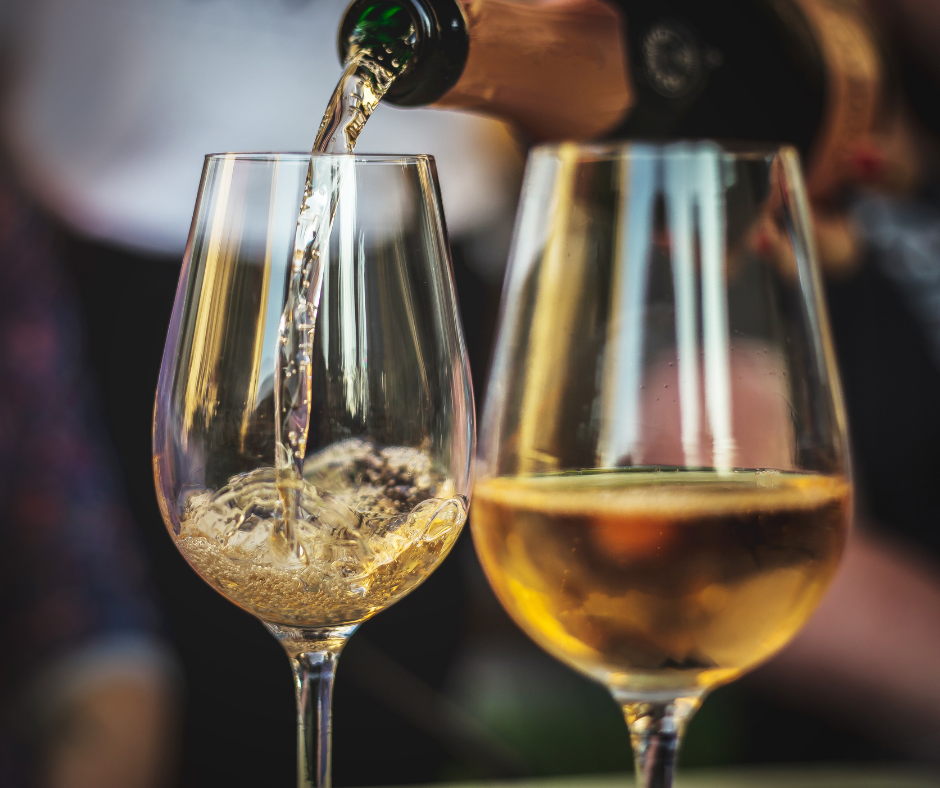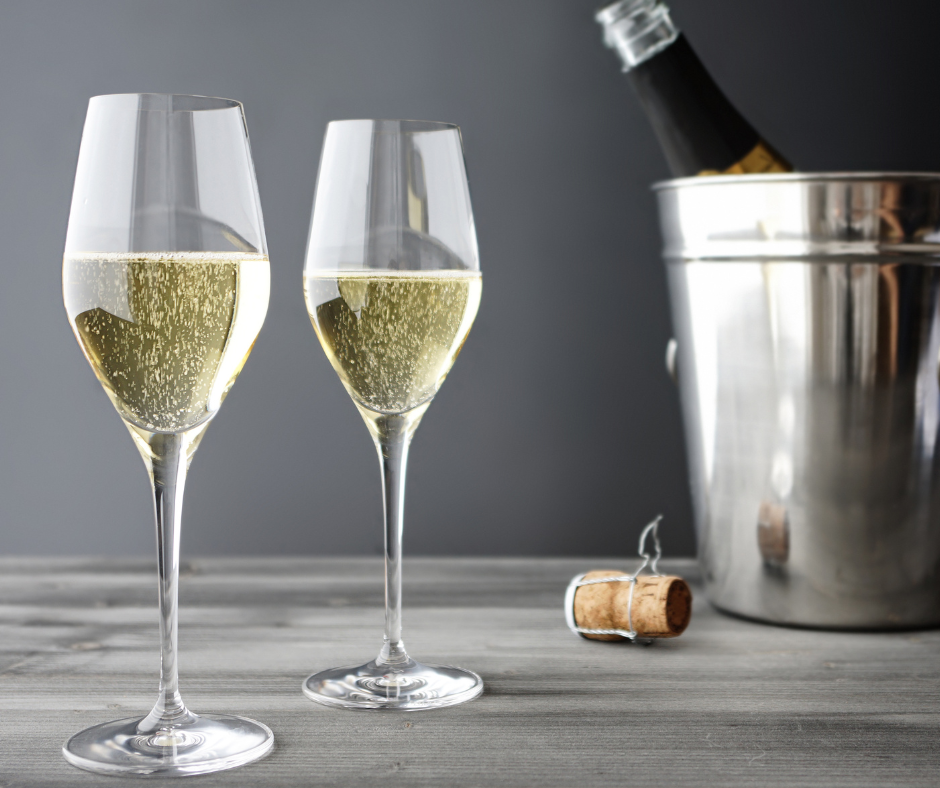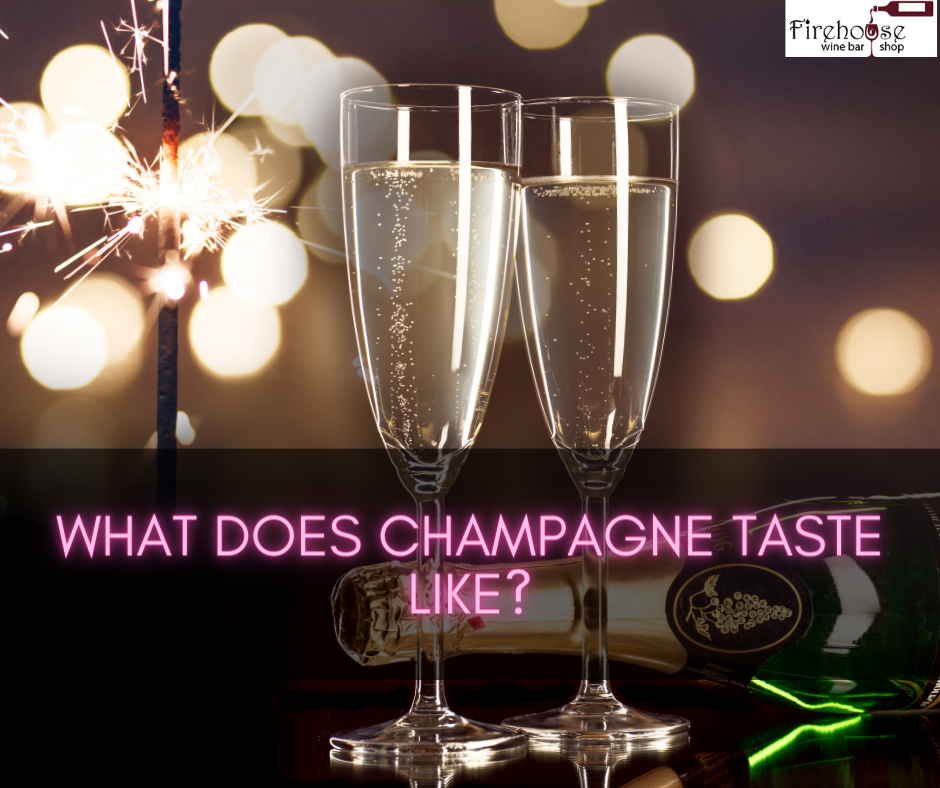Introduction
Regarding champagne, there is so much more to discover beyond the bubbles. Each sip of champagne offers a unique and delightful flavor profile, making it a true celebration for the senses. But What Does Champagne Taste Like? In this blog, we will explore the distinct characteristics that make champagne unique and why it is worth exploring its flavors.
What Makes Champagne Unique?
Champagne is not just any sparkling wine; it has its own set of unique characteristics that set it apart. Firstly, champagne can only be called champagne if it is produced in the Champagne region of France using specific grape varieties, including Chardonnay, Pinot Noir, and Pinot Meunier. The terroir of this region, with its chalky soil, cool climate, and unique growing conditions, contributes to the distinct flavor profile of the wines.
Furthermore, the traditional method used in Champagne production, méthode champenoise, is crucial in creating its unique taste. This method involves a secondary fermentation in the bottle, which gives champagne its signature effervescence and complex flavors.
Why Explore The Flavors Of Champagne?
Each type of champagne has its unique taste, offering a wide range of flavor profiles to explore and enjoy. Champagne is like a symphony of flavors, combining notes of crisp green apple, delicate pear, and a touch of citrus, with hints of floral, toasty, or nutty undertones. By exploring the different Champagne varieties, you can discover your preference and find the perfect champagne to suit any occasion.
Moreover, exploring the flavors of champagne allows you to enhance your tasting skills and experience the delightful nuances in each bottle. Through guided Champagne tastings, you can learn to observe the sparkling colors, delicately inhale the enchanting aromas, and savor each sip, truly appreciating the complexity and craftsmanship that goes into every bottle of champagne.
In conclusion, champagne is not just a drink but an experience. Its unique characteristics and diverse flavor profiles make it a fascinating beverage. Whether you are a Champagne connoisseur or a curious beginner, embarking on a journey to discover the flavors of champagne will surely leave a lasting impression on your palate.

What Does Champagne Taste Like?
Understanding The Making Process
To truly determine ‘What Champagne tastes like?’, it is important to understand the intricate process that goes into its creation. The production of champagne begins with carefully selecting grape varieties, including Chardonnay, Pinot Noir, and Pinot Meunier, which contribute to the final flavor profile. These grapes are harvested and pressed, and the extracted juice undergoes fermentation to create the base wine.
However, what sets champagne apart is the secondary fermentation process called méthode champenoise. After the base wine is made, a mixture of sugar and yeast, known as the dosage, is added to the bottle. This triggers a second fermentation, resulting in the formation of bubbles and the creation of champagne’s effervescence. The bubbles are formed as carbon dioxide is trapped within the bottle.
Champagne develops its unique flavors during this secondary fermentation as it ages on yeast lees. This aging process, known as sur lie, can take several months or even years, allowing the flavors to evolve and develop complexity. The yeast lees contribute to some Champagne styles’ toasty, nutty, and brioche-like flavors.
Flavor Profiles Of Different Styles Of Champagne
Champagne offers a myriad of styles, each with its distinct taste profile. One of the most common styles is Brut, which is crisp and dry, showcasing the Champagne region’s true essence. On the other hand, Extra Dry has a touch of sweetness, while Demi-Sec and Doux cater to those with a sweet tooth, offering a luscious and rich experience.
The choice of grape varieties and the aging process also play a significant role in determining the taste of champagne. For example, Moët & Chandon Impérial’s lively flavors of green apple, citrus, and white flowers represent an approachable choice. In contrast, Krug Grande Cuvée, a complex masterpiece, boasts layers of flavors, including honey, dried fruit, and brioche. And Perrier-Jouët Belle Epoque, with its floral beauty, presents flavors of white flowers, pear, and a touch of minerality.
In conclusion, the taste of champagne is a magical journey through a world of flavors. From the crisp and dry Brut to the lusciously sweet Demi-Sec and Doux, there is a Champagne style to suit every palate. The grape varieties, the méthode champenoise, and the aging process all contribute to the symphony of flavors that make champagne a truly enchanting beverage. So, raise a glass and embark on a flavor exploration of this effervescent elixir of celebrations!
Champagne And Food Pairings
Tips For Pairing Champagne With Different Dishes
Pairing champagne with the right dishes can elevate the food and the wine, creating a harmonious flavor experience. Here are a few tips to help you make the most of your Champagne and food pairings:
- Consider the sweetness level: Champagne comes in a range of sweetness levels, from bone dry (Brut Nature) to semi-sweet (Demi-Sec). When pairing champagne with food, consider the sweetness of the dish. Sweeter Champagnes can complement desserts or richer, sweeter dishes, while drier Champagnes are more versatile and can be paired with a wider range of foods.
- Match intensity: Consider the intensity of the flavors in both the champagne and the dish. Lighter, delicate dishes like oysters or sushi pair well with crisp, light-bodied Champagnes like Blanc de Blancs. On the other hand, fuller-bodied Champagnes like Blanc de Noirs or vintage Champagnes can stand up to heartier dishes like roasted meats or creamy sauces.
- Balance acidity: Champagne’s vibrant acidity can help cleanse the palate and cut through rich or fatty foods. The acidity of the champagne can complement dishes like fried chicken or creamy seafood pasta, balancing the flavors and providing a refreshing contrast.
- Consider texture: The texture of the food can also affect the pairing. Creamy textures, like those found in buttery brie or velvety sauces, can complement creamy-textured Champagnes like a Blanc de Blancs or vintage champagne. On the other hand, crisp, fried foods can be balanced by the effervescence and acidity of a brut Champagne.
The Art Of Creating Delightful Combinations
Pairing champagne with food is a delightful art that allows you to explore the myriad of flavors and textures the wine and the dish offer. Some classic Champagne and food pairings include:
- Fried chicken and Champagne: The crispy, savory flavors of fried chicken are enhanced by the effervescence and acidity of champagne. This unlikely combination is a match made in heaven.
- Steak tartare and Champagne: The raw, delicate flavors of the beef in steak tartare are complemented by champagne’s bright acidity and toasty flavors. The bubbles also provide a refreshing contrast to the rich meat.
- Oysters and Champagne: Oysters and Champagne are a classic pairing that showcases the delicate brininess of the oysters and the crisp, mineral notes. The combination is elegant and refreshing.
- Strawberries and Champagne: The sweet, juicy flavors of strawberries are beautifully complemented by champagne’s vibrant acidity and delicate bubbles. This pairing is perfect for a summer dessert.
In conclusion, champagne is a versatile wine that can be paired with various dishes. With the right tips and considerations, you can create delightful combinations that enhance both the food and the champagne, allowing you to experience the range of flavors this effervescent elixir offers fully. So, next time you plan a meal, don’t forget to raise a glass of champagne and embark on a flavor exploration that will surely delight your taste buds. Cheers!

Exploring The Flavors Of Non-vintage Champagnes
Characteristics Of Non-vintage Champagnes
Non-vintage Champagnes are an intriguing sparkling wine category that offers a unique flavor experience. Unlike vintage Champagnes, made from grapes harvested in a single year, non-vintage Champagnes are crafted from a blend of wines from different years. This blending process allows Champagne producers to create a consistent and distinctive style that showcases the house’s signature taste profile.
Non-vintage Champagnes often exhibit a lively and refreshing character, with a fine balance between fruitiness and crispness. They are typically dry or off-dry, with varying levels of acidity that give them a vibrant and zesty quality. These Champagnes can have notes of fruit, such as green apple, peach, or baked apples, along with minerality specific to the region where the grapes were grown. The flavors can range from citrusy and floral to toasty and nutty, depending on the production methods and aging process.
The aging process also contributes to the complexity of non-vintage Champagnes. While vintage Champagnes are often released after several years of aging, non-vintage Champagnes undergo shorter aging periods, typically around 15 months. This shorter aging allows for expressing youthful and fresh fruit flavors, accompanied by subtle secondary or tertiary notes. These secondary or tertiary notes add complexity to the wine, such as hints of brioche, almond, or honey.
Popular Non-vintage Champagne Brands To Try
If you’re ready to embark on a flavor exploration of non-vintage Champagnes, here are some popular brands that deserve a spot on your tasting list:
- Krug Grande Cuvée: As one of the most renowned Champagne houses, Krug delivers an exceptional non-vintage blend. Expect a rich and complex wine with flavors of ripe fruits, nuts, and spices. Krug Grande Cuvée is an excellent representation of the meticulous craftsmanship and dedication to quality that sets this house apart.
- Laurent-Perrier Grand Siecle: This non-vintage Champagne from Laurent-Perrier is a true masterpiece. It is crafted from a blend of three exceptional vintages and showcases a harmonious balance of elegance and power. The flavors are delicate yet intense, with notes of citrus, white flowers, and toasted brioche.
- Bollinger Special Cuvée: Bollinger’s non-vintage offering is a crowd-pleaser known for its richness and depth. This champagne delivers a generous palate filled with flavors of ripe fruits, spices, and a hint of smoky complexity. It is a versatile wine that pairs well with various dishes.
- Roederer Brut Premier: Roederer’s non-vintage champagne is a classic choice for those seeking a balanced, refined wine. It displays a fine mousse and offers flavors of citrus, stone fruits, and a touch of toasted nuts. The precise craftsmanship and attention to detail make this champagne a true delight.
Whether you’re a Champagne enthusiast or new to the world of sparkling wines, exploring the flavors of non-vintage Champagnes is a journey worth undertaking. These wines offer a unique expression of the Champagne region and the artistry of the producers. So, gather your glasses, take a sip, and let the flavors transport you to the magical world of bubbles and celebration. Cheers to the joy of champagne!
Exploring The Flavors Of Vintage Champagnes
What Sets Vintage Champagnes Apart?
Vintage Champagnes hold a special place in the hearts of wine enthusiasts. Unlike non-vintage Champagnes, crafted from a blend of wines sourced from different years, vintage Champagnes are made from grapes harvested in a single exceptional year. This allows the winemaker to showcase the unique characteristics of that specific harvest, resulting in a wine that reflects the nuances of the vintage.
The aging process further enhances the complexity of vintage Champagnes. These wines often undergo an extended aging period, some released after several years. This aging allows the flavors to develop and integrate, resulting in a harmonious and refined wine. The fruit notes become more concentrated and evolve into rich flavors of ripe apple, pear, and citrus. At the same time, the secondary and tertiary aromas develop, offering hints of toasted brioche, almond, and honey.
Notable Vintage Champagne Producers
Regarding vintage Champagnes, several esteemed producers have mastered the art of creating exceptional wines year after year. Dom Pérignon, with its long-standing reputation for excellence, consistently delivers vintage Champagnes of unparalleled quality. Their wines balance elegance and power with intense flavors and a long, lingering finish.
Another notable producer is Louis Roederer, known for its iconic Cristal Champagne. The vintage expressions from Louis Roederer are a true testament to their commitment to craftsmanship and precision. These Champagnes captivate the senses with finesse, complexity, and unmistakable elegance.
Krug, a house renowned for its dedication to craftsmanship, produces vintage Champagnes that are highly sought after. Their wines are rich, intense, and multi-layered, focusing on showcasing each vintage’s unique character.
Exploring the world of vintage Champagnes is an experience that lovers and wine enthusiasts should undertake. Each bottle tells a story, capturing the essence of a particular year and offering a taste of history. So, raise your glass and let the flavors transport you to a world of sophistication and pleasure. Cheers to the joy of champagne!

Terroir In Champagne
Understanding The Concept Of Terroir In Champagne
When it comes to champagne, the influence of terroir is often overlooked. Terroir refers to the combination of soil, climate, and other environmental factors that affect the grapes’ growth and, ultimately, the wine’s flavor. Like with still wines, the terroir in champagne plays a crucial role in determining the distinct characteristics of each bottle.
Recently, there has been a growing interest in single vineyard and grower champagnes. Single vineyard champagnes are made from grapes grown in a specific vineyard, allowing for a more focused expression of terroir. These champagnes offer a unique tasting experience, as the flavors and aromas reflect the specific vineyard’s soil composition and microclimate.
Discovering Unique Offerings From Small Producers
Grower champagnes, also known as artisanal or farmer champagnes, are produced by independent winegrowers who own the land, cultivate the grapes, and make the wine themselves. These small-scale producers often have a deep connection to their vineyards and take a hands-on approach to winemaking.
One of the advantages of exploring grower champagnes is the opportunity to discover lesser-known producers and hidden gems. Sip Champagnes, for example, offers a wide selection of grower champagnes from newly discovered and fully independent producers. These champagnes cannot be found in larger retail outlets, making them a unique addition to any champagne collection.
In addition to the variety of flavors and styles offered by grower champagnes, there is also the joy of experiencing the distinctiveness of each vintage. Unlike non-vintage champagnes, which aim for consistency year after year, grower champagnes often showcase the variations and nuances of different harvests.
So, whether you explore the terroir-driven flavors of single vineyard champagnes or indulge in the artisanal creations of small growers, delving into the world of champagne offers a taste experience like no other. Raise your glass and let the flavors transport you to a world of sophistication and pleasure. Cheers to the joy of champagne!
Prestige Cuvées: The Crème De La Crème
What Makes Prestige Cuvées Special?
Prestige cuvées are the pinnacle of a Champagne house’s production. They are crafted using the finest grapes from the Grand Cru vineyards and undergo an extended aging period in the cellar. Each bottle represents the epitome of craftsmanship and showcases the house’s dedication to producing the best quality champagne. Prestige cuvées are often characterized by their complexity, richness, and ability to age gracefully.
Iconic And Luxury Champagne Brands To Indulge In
When indulging in prestige cuvées, several iconic Champagne brands are renowned for their exceptional quality and luxurious offerings. Dom Pérignon, produced by Moët & Chandon, is a celebrated prestige cuvée that exemplifies elegance and refinement. With its rich and abundant Champagnes, Krug is another revered brand that has consistently wowed wine enthusiasts worldwide. Other notable Champagne houses that produce prestigious cuvées include Louis Roederer, Bollinger, and Salon.
Whether you choose to savor the delicate flavors of Dom Pérignon, the boldness of Krug, or the distinctiveness of other renowned Champagne brands, indulging in prestige cuvées is a luxurious experience that will elevate any special occasion or celebration.
Champagne Cocktails: Beyond Bubbles
If you think champagne is only reserved for toasting, think again. Champagne can be a versatile and delightful addition to cocktails, offering a new and exciting way to enjoy its unique flavors. Whether hosting a celebration or simply looking to elevate your happy hour, experimenting with champagne cocktails opens up a world of possibilities.
Creative Champagne Cocktail Recipes
- French 75: This classic cocktail combines champagne, gin, lemon juice, and a touch of simple syrup for a bright and refreshing drink. It’s perfect for those who enjoy a citrusy and crisp flavor profile.
- Kir Royale: Try this cocktail made with champagne and crème de cassis, a blackcurrant liqueur, for a touch of elegance. Its deep red color and fruity notes add a sweet and luxurious twist to your champagne.
- Bellini: Originating from Italy, this cocktail features champagne and peach puree for a luscious and fruity combination. It’s a fantastic choice for brunch or a sunny afternoon gathering.
- Champagne Cosmo: Give a modern twist to the classic cosmopolitan by swapping vodka for champagne. With cranberry juice, lime juice, and a splash of Cointreau, this cocktail delivers a harmonious blend of tartness and effervescence.
Exploring Different Flavor Profiles With Mixed Drinks
Champagne’s versatility extends beyond traditional cocktails. Mixologists are now exploring different ingredients and flavors to create exciting concoctions catering to various tastes.
- Bitters and Herbal Infusions: Adding a few bitters or infusing champagne with herbs and spices can elevate flavor. Experiment with combinations like lavender and lemon bitters or rosemary and grapefruit infusion for a unique and aromatic experience.
- Fruits and Liqueurs: Experiment with different fruits and liqueurs to add depth and complexity to your champagne cocktails. From mango puree and passion fruit liqueur to raspberry syrup and elderflower liqueur, there are endless possibilities to create vibrant and flavorful drinks.
- Savory Elements: Don’t be afraid to step outside the box and incorporate savory elements into your champagne cocktails. Add a splash of tomato juice, a pinch of salt, or even a hint of hot sauce for an unexpectedly delightful twist.
As champagne continues to evolve beyond its traditional role, exploring champagne cocktails allows you to discover a new world of flavors and experiences. So, next time you’re feeling adventurous, raise a glass and indulge in the enchanting world of champagne cocktails. Cheers to creativity and a toast-worthy journey!
Conclusion
Reflecting On The Flavor Journey
Now you should know the answer to ‘What Does Champagne Taste Like?’. As we end this flavor exploration, it’s clear that champagne is more than just bubbles and celebrations. It is a captivating elixir that takes us on a magical journey through a world of flavors. From the crisp green apple and citrus notes of Moët & Chandon Impérial to the complex layers of honey and dried fruit found in Krug Grande Cuvée, each champagne offers its distinct taste profile.
We’ve also discovered the floral beauty of Perrier-Jouët Belle Epoque, with its delicate flavors of white flowers and pear, accompanied by a touch of minerality. Each sip of champagne is like a symphony of flavors, dancing on our taste buds and leaving a lasting impression.
Final Thoughts And Recommendations
Champagne truly offers a delightful and enchanting experience for any occasion. Whether you prefer a classic champagne toast or want to venture into the world of champagne cocktails, there are endless possibilities to explore and enjoy.
For those who appreciate a citrusy and crisp flavor profile, the French 75 cocktail, with its combination of champagne, gin, lemon juice, and simple syrup, is a refreshing choice. If you’re looking for elegance and a touch of luxury, the Kir Royale with crème de cassis and champagne will surely impress. And for a luscious and fruity blend, the Bellini with peach puree and champagne is an excellent option.
But don’t stop there – continue to push the boundaries of champagne cocktails by experimenting with different flavor profiles. Countless combinations are waiting to be discovered, from bitters and herbal infusions to fruits and liqueurs. Don’t be afraid to add a savory twist with ingredients like tomato juice or hot sauce for a unique and unexpected experience.
In conclusion, the taste of champagne is a journey that never fails to captivate our senses. Its magical flavors and effervescence add a touch of enchantment to any occasion. So, raise a glass, explore the world of champagne, and savor every moment. Cheers to the endless possibilities and the joy of champagne!
FAQ
Q: What does champagne taste like?
A: Champagne tastes bright and refreshing with lively bubbles and flavors like green apples, lemons, and peaches. It can also have hints of flowers or nuts and feels fizzy and fun in your mouth.
Q: Are there different types of champagne with different tastes?
A: Yes, each type of champagne has its own unique taste, so there’s a lot to explore and enjoy!
Q: Can you describe the flavors of champagne?
A: Picture a sip of golden sunshine with hints of crisp green apple, delicate pear, and a touch of citrus. It’s like a sip of happiness dancing on your taste buds.
Q: What determines the taste of champagne?
A: Champagne’s flavors depend on the grapes used in its production.
Q: What makes champagne so special?
A: Beyond the bubbles and clinking glasses, champagne has an allure that never fails to captivate our senses. It’s the pop, fizz, and sparkle that adds a touch of magic to any occasion.

Andre Lotz immigrated to the United States from South Africa almost 20 years ago. Still, he didn’t feel truly at home until he settled in Mobile—a city that reminds him of his childhood home of Fish Hoek on the southern cape of Africa.

